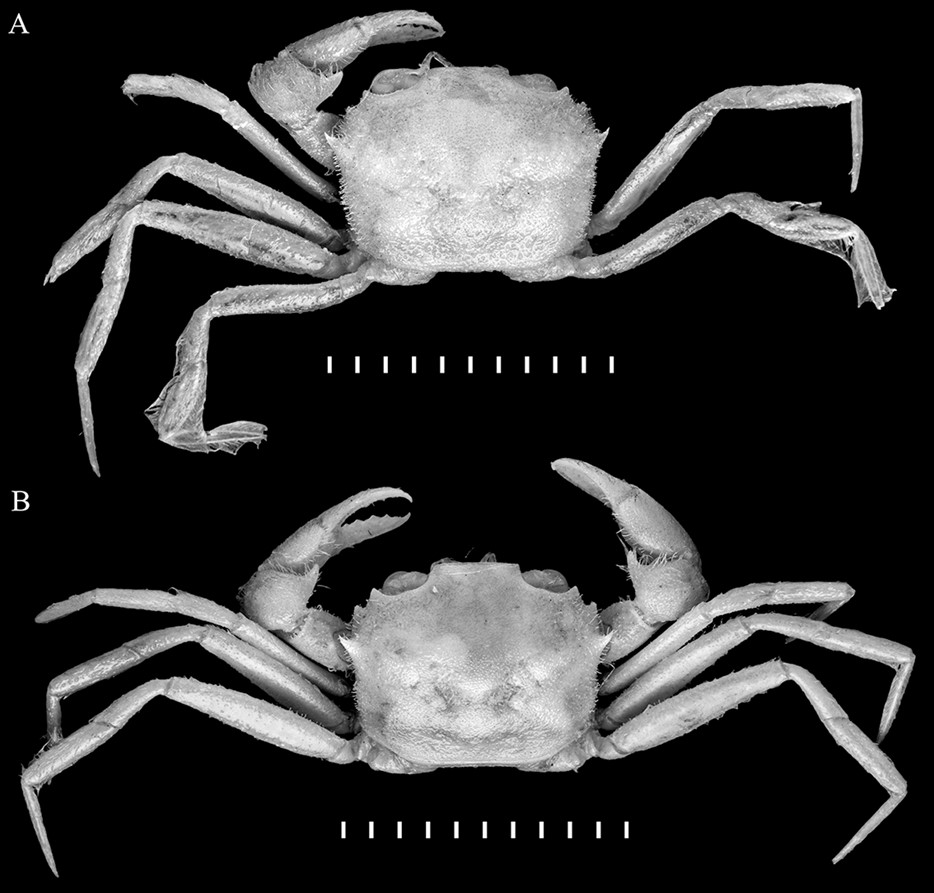Taxonomy and Systematics of Homoioplax haswelli (Miers, 1884)
The Panopeidae Ortmann, 1893, is a wholly American and Atlantic brachyuran family, with the exception of Homoioplax haswelli
(Miers, 1884). This species was first described from the Arafura Sea,
north of Australia, and subsequently reported from off the Kei Islands
and off northwestern Australia. Homoioplax
Rathbun, 1914, was established and assigned to the Prionoplacinae
Alcock, 1900 in the Goneplacidae MacLeay, 1838, because the male pleon
did not fully reach the bases of the ambulatory legs. Prionoplacinae
was subsequently shown to be a junior synonym of Eucratopsinae
Stimpson, 1871, and eventually placed in the Panopeidae Ortmann, 1893.
The position of Homoioplax
however was not re-evaluated and as a result the genus has remained in
the Panopeidae as the only Indo-West Pacific representative of the
family. Consequently, this study has examined the juvenile syntypes of H. haswelli in detail with a view to revising its systematics.




Dorsal habitus. Carcinoplax haswelli
(Miers, 1884) comb. nov. A, lectotype male (10.2 × 7.3 mm) (NHM
1882.7); B, paralectotype female (9.0 × 6.6 mm) (NHM 1882.7). Taken by
Kevin Webb, NHM Photo Unit.
Read the full article, published by Zoological
Studies, here
Follow Zoological Studies on
Twitter @ZooStudies
and Facebook
